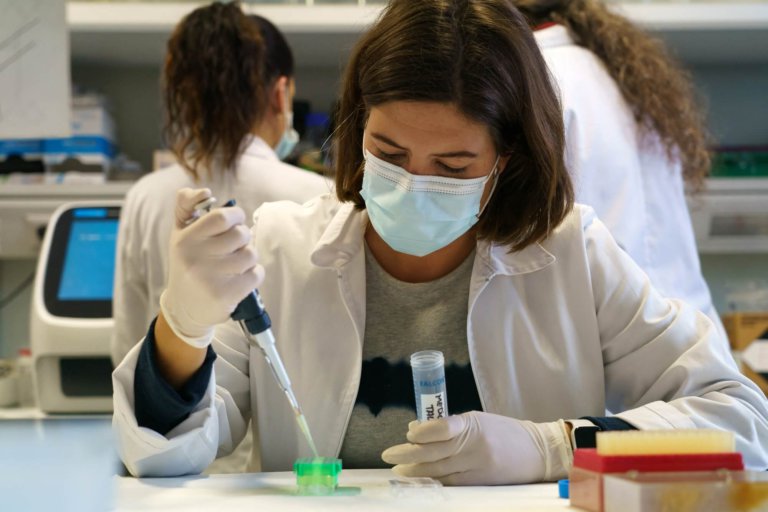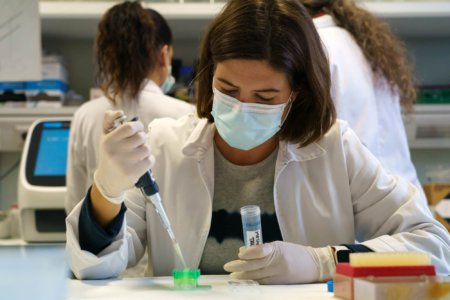
Black and Latino students who start out majoring in STEM – or science, technology, engineering or mathematics – are more likely than their white peers to switch fields or leave without a degree.
Some students leave because they feel isolated on campus. Others may lack the type of technical skills, such as effective communication in science, needed to persist in these subjects. When students from underrepresented groups leave STEM majors, it affects all of society, hampering the overall potential for critical thinking, creativity and innovation.
Scientific innovation and progress require the talents of people from diverse backgrounds.
As Ph.D. biology candidates at one of the nation’s top historically Black universities, we joined a group of scientists in 2021 to discover and recommend a few things to help underrepresented students build their scientific identity and stick with STEM. What follows are four of those recommendations.
1. Take a freshman seminar class
Freshman seminars, located at large and small colleges alike, are designed to assist students as they adjust to the new college environment. Freshman seminars help students cope with the stress of academic pressures as well as everyday college life.
Students who earned poor grades in introductory STEM classes are more likely to leave STEM than those who earned higher scores. Participation in freshman seminars can help students increase their overall GPA within their first year. This can in turn encourage them to persist in their given major.
Although it may take awhile for freshman students to get used to college work, a 2021 article notes that minority students may have an even more difficult transition than their white counterparts. Researchers who surveyed students in first-year seminars at 45 four-year col1eges and universities concluded that the seminars should cover topics like the benefits of mentorship, the power of networking and how to secure employment after graduation.
2. STEM majors can take a research course for undergraduates
STEM students need research experience prior to graduating to be more attractive for future employers or graduate school. One format for these experiences is known as “CURE,” an acronym for course-based undergraduate research experiences. These CUREs, if you will, provide opportunities for undergraduates to participate in real-life science from design to execution. Research shows that these undergraduate research experiences are effective. At Montana State University, for instance, a study found that students who took these courses gained a better understanding of environmental microbiology and thermal biology.
CUREs allow professors to interact with undergraduates on a more personal level. One article shows that having faculty with a similar identity to minority students provides students with role models with whom they can relate. Students who see themselves reflected in their professors are more successful in their majors, research has shown.
If colleges lack the resources to establish CUREs, they can collaborate with better-resourced colleges that are nearby. One study found that when a small, predominantly white college collaborated with a larger historically Black college, student test scores increased significantly – from a grade range of 35%-60% to a range of 65%-86%. Students also saw great benefit in being able to engage with students from different backgrounds.
3. Join a journal club
Aspiring STEM professionals must be able to interpret scientific articles to stay informed about their field’s scientific activity. As essential as this skill is, it is generally taught in extracurricular spaces like lab-based journal clubs, not classrooms. Universities with “very high” research activity usually have these journal clubs in place, but at universities with less research activity or institutions that serve minorities, research-related activities may take a back seat due to high teaching loads among professors.
For that reason, some underrepresented STEM majors are in for a rude awakening when they enter graduate school. They may become overwhelmed when suddenly asked to comprehend many dense, jargon-filled articles on their own.
That is why participating in journal clubs in college is so important. These free journal clubs give students a chance to learn how to read articles with the help of their peers and mentors. Journal clubs, like the CASL Club at the University of North Carolina at Pembroke, also help STEM majors get the confidence they need to critique articles and conduct their own scientific research. Frequent participation in journal clubs also helps STEM majors meet the standards of academic journals for their own publications.
4. STEM majors can attend a grant-writing academy
It’s tough but essential for STEM professionals to secure grants to fund their research long term. Most grant funding goes to a cluster of large or predominantly white institutions. Reasons for this include bias in the awarding of grants, as well as lower rates of grant submission and resubmission among underrepresented researchers. Collectively, these issues translate to less funding over time for underrepresented STEM students and professionals.
In grant writing, early patterns of success or failure tend to influence later patterns of success. Hence, the earlier any STEM major learns to successfully write and secure grants to support their research, the better their chances of completing their research. Grant-writing academies can provide some of the much-needed technical guidance for students to increase their ability to secure funding. For example, student participation in Stanford’s Biosciences Grant Writing Academy made it almost twice as likely for participants to win funding.
As biologists who study complex phenomena, we know that the subjects of science, technology, engineering and mathematics are hard. However, we believe these four strategies can better equip underrepresented STEM majors with the tools to excel in their fields.![]()
Esohe G. Irabor, Ph.D. Candidate in Biology, Howard University and Brandyn White, Ph.D. Candidate in Biology, Howard University
This article is republished from The Conversation under a Creative Commons license. Read the original article.










